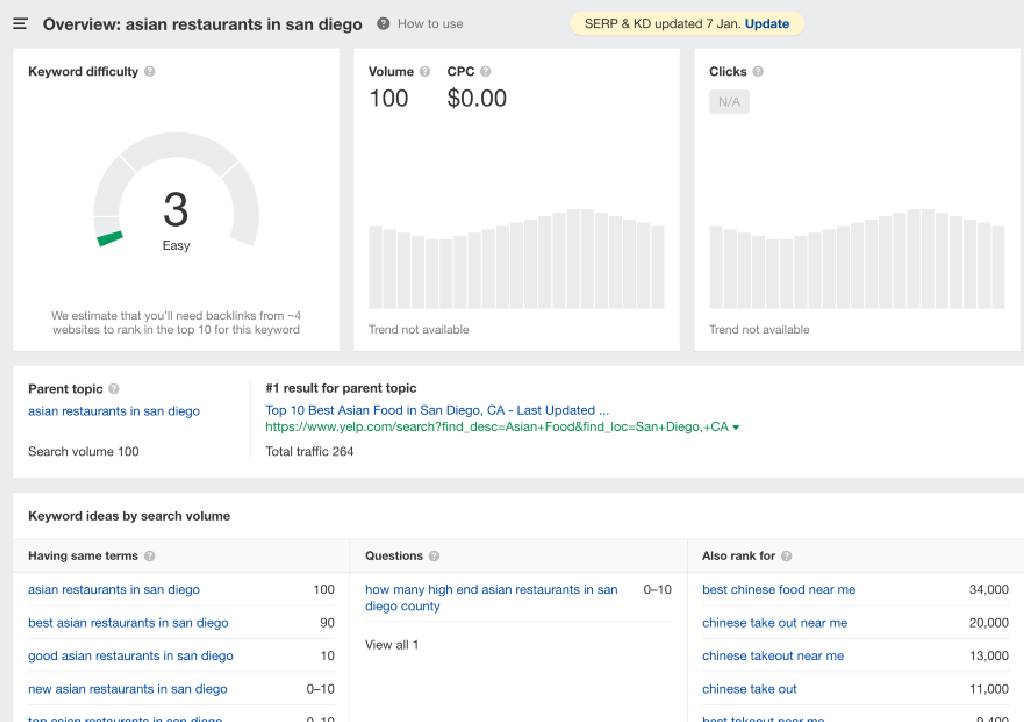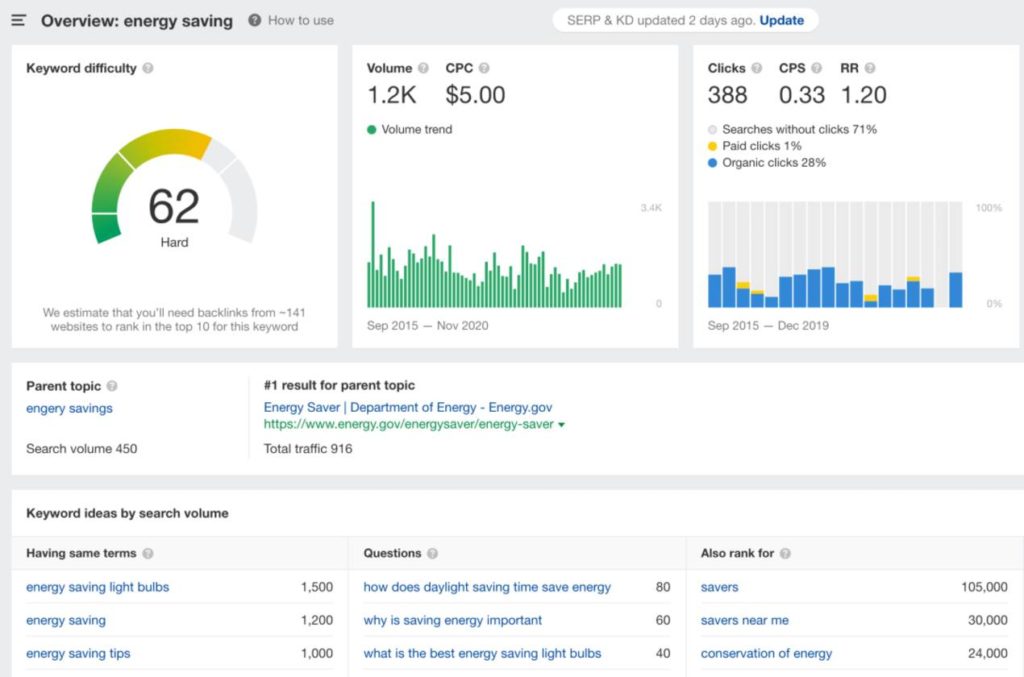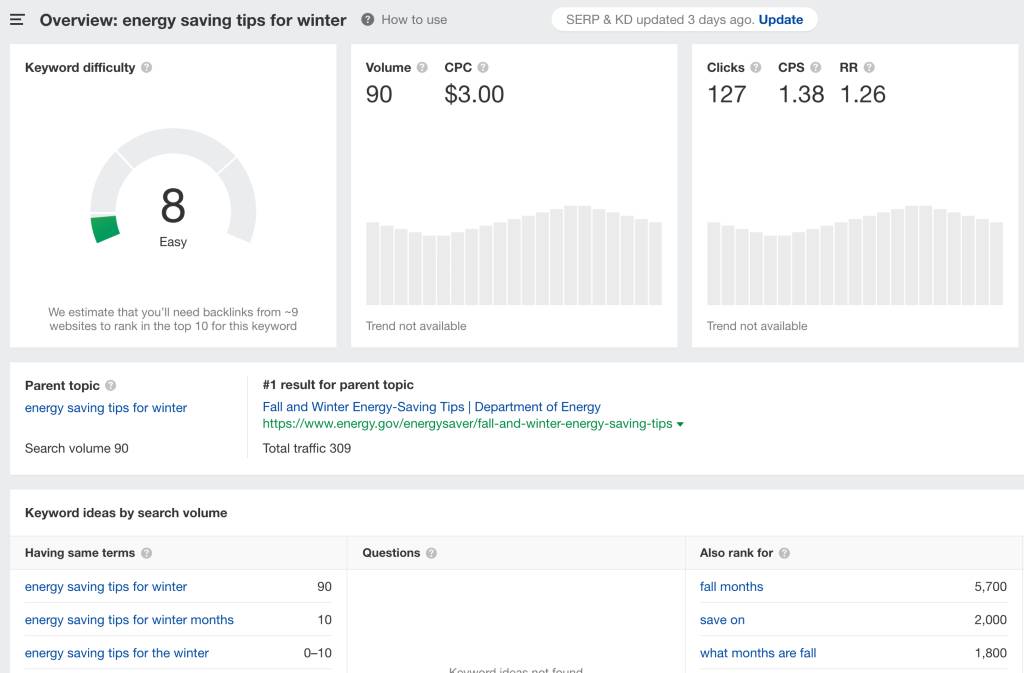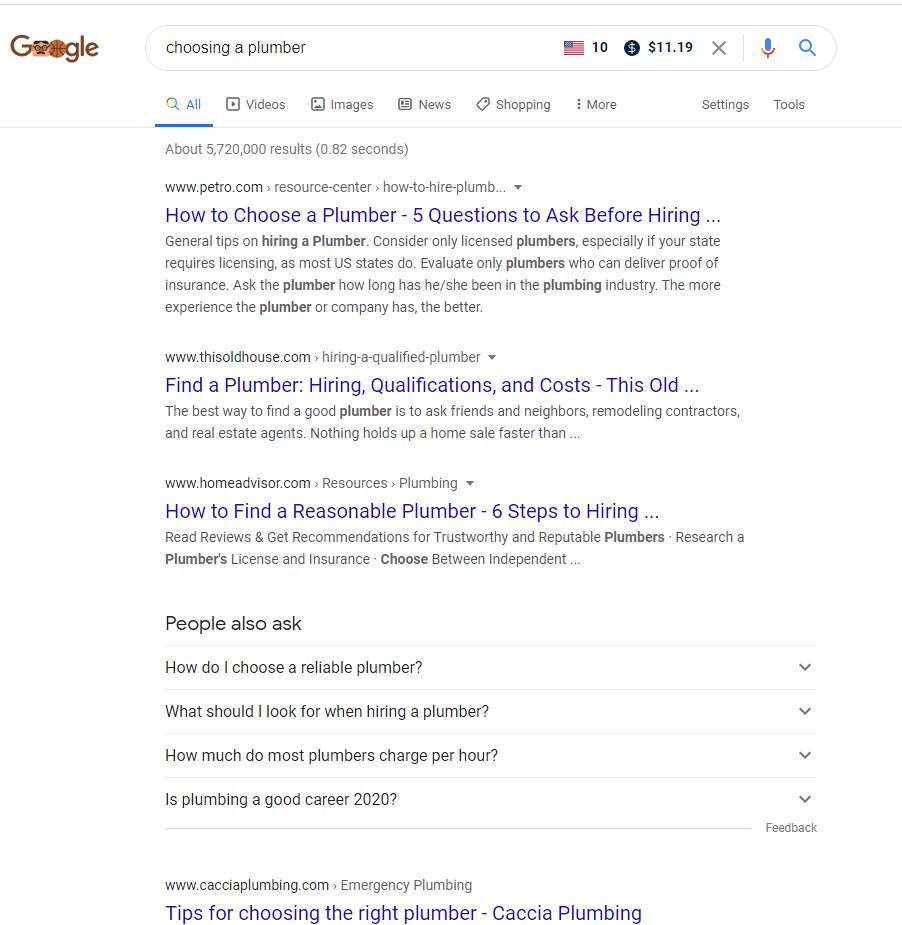How to Draft the Perfect Blog Post Outline
Share this Article

The biggest sin you can commit in blogging is to write without a plan.
Success in blogging is generally based on how much traffic and engagement a post receives. Going into the writing process without a blog post outline is like building a house with no floor plan, blueprint, or even a drawing.
Simply put, the more robust your outline is, the easier it will be to write the actual post.
Think of it like this: it might take you six hours to chop down a tree with your ax. But if you spend four hours sharpening your ax, you can chop down the tree in two hours.

Creating a blog post outline is like sharpening the ax in this analogy. By doing so, you’ll have much better direction, resources, clarity, and results in your writing.
Now, outlining blogs is a calculated art. In this article, we want to walk you through how to outline a blog post and empower your future self in the writing process.
Let’s get sharpening!
Make Sure Your Topic is in Demand
This is THE most important piece of the puzzle in blogging – or any sort of content creation for that matter.
All too often, bloggers create content for themselves, not the masses.
To put it bluntly, what’s interesting to you may not be interesting to everyone else. Before you even start thinking about creating the blog post outline, you need a firm grasp on whether or not the masses will care to read the post.
How do you do this?
Start with keyword research.
There are many, many different tools out there you can use for this.
At Foxxr, we use Ahrefs as our go-to resource for keyword research.
For example, say you really love egg drop soup and want to write a blog post about the “best egg drop soup in San Diego”. Let’s see what we’re working with for keywords on this topic:

As you can see, there isn’t much search demand for people on the hunt for egg drop soup in San Diego. Unless you want your blog post to function as a personal diary, we’re going to need to change the focus.
Let’s get a little broader here and consider “Asian restaurants in San Diego”.

Given the data above, there is definitely a search demand for this query. So instead, you are wise to focus your post on Asian restaurants in general, then mention egg drop soup within the content – win-win!
Now, when it comes to choosing a focus for your blog post, you need to find a happy medium in search demand. Studies have found that 75 percent of Google searches never go past page one of the search engine results pages (SERPs).
The overarching goal of any piece of content you create is to be ranked on page one of the SERPs. Keep in mind, if the focus has too much demand, chances are, your post will never see the light of day.
For instance, let’s say you want to write a blog post about energy conservation in the winter. Let’s see what we get if we choose the broad focus keyword “energy saving.”

This term has a large search volume and is rated as “Hard” to rank on page one of Google. So, you’d want to get a little more specific in your focus. Let’s see what “energy-saving tips for winter” looks like:

This would be significantly easier to rank for. As a rule of thumb when choosing the focus keyword of your blog post, always go for the low hanging fruit.
Make sure the difficulty is “Easy” or “Medium”, especially when you’re first starting out. As you get your posts ranked and build up more clout online, you can start going after the keywords/topics with higher search demands and difficulties.
Once you get your focus keyword nailed down, the next step is finding related keywords to be used throughout the rest of the blog post.
Now, Ahrefs is a fantastic tool for keyword research, but it’s not free.
If you don’t have a budget for a paid tool, Ubersuggest is a great free option.
How to Observe Related Content with a Competitive Analysis Software?
So now that you have the blog focus figured out, you need to take a gander at what all is popping up on Google searches.
Say you’re planning a blog post about tips for “choosing a plumber”. You need to take this query to Google and see what is showing up on page one of the SERPs.

From here, look into the top-ranking posts to see what they are doing well, what insight they are providing, and most importantly, how you can create something better.
At Foxxr, we use the PageOptimizer Pro tool to analyze technical aspects of the top-ranking content for a keyword. The tool shows us all the common threads in these posts, including (but not limited to):
- The keywords they are ranking for
- The average number of times those keywords appear in the content
- The number of subheadings
- The keywords in the subheadings
This information lays the technical groundwork for how to structure your blog post outline. From here, you need to get creative and find ways to top the highest-ranking posts on the SERPs.
Always remember: Google’s algorithms are constantly working to provide users with the best quality and most relevant results for their search query. Your goal is to make your blog post meet that criteria – and competitive analysis is the key to doing this.
How to Create the Goal of the Post?
This part of the process is to set a firm direction for your blog post and keep you grounded in your writing.
Once you have the focus of the blog and competitive research, it helps a lot to write down the goal of the post at the very top of the outline.
- Why are you writing this post?
- For whom are you writing this blog post for?
- Why would people want to read this blog post?
- What fresh insight are you adding to the space?
- What value do you want readers to walk away with?
The goal of your post should clearly answer all these questions. Without firm answers here, your post may end up lacking the focus it needs to stand out.
Develop Your Content Title Tag & H1
Ok, now that we’ve taken care of the infancy stages of blogging, it’s finally time to start writing the blog post outline.
The first places to start are your title tag and H1. Now, both of these tags serve similar purposes, but they are different pieces of the puzzle.
Your title tag is what shows up on the SERPs.

The H1 tag is the title of your post displayed on your website. The H1 tag is at the top of the hierarchy in your blog post. It needs to be catchy and include the focus keyword.

Both of these title tags may be the same. However, Google only displays the first 60 characters of your title tag (with spaces) – so you need to be mindful of that.
Formulate the Section Headers
Now that we have our H1 tag, it’s time to work our way down the hierarchy of the post with H2s, H3s, and so on. Keep in mind, when people scan a blog post, the header tags are the first pieces of text that pop out.
The subheadings should feed into the main topic and include related keywords to give users (and Google’s bots) a clear idea of what the post is all about. Let’s say you’re writing a post geared towards homeowners looking to do a mold inspection on their house.
Here’s what the blog post outline might look like to this point (keywords are highlighted):
The Goal of Post: We are writing this post to help prepare homeowners for their first mold inspection. We want them to have a clear understanding of why they might need an inspection, as well as how to find a trustworthy professional. By giving them some insider tips, we want to be sure they know exactly what to do to make things easy on themselves, and the mold professional.
H1: 4 Tips for Your First Home Mold Inspection and Testing Appointment
H2: 1. Create a Mold Inspection Checklist Before You Reach Out to a Pro
H3: Is There a Mold Smell?
H3: Are There Any Suspicious Mold Growths
H3: Do Your Air Ducts Have Water Droplets on Them?
H3: Are There Mold Stains or Spots on Your Walls?
H2: 2. Get Several Quotes for the Mold Inspection Cost
H2: 3. Ask the Provider About Their Mold Inspection Certification
H2: 4. Ask How Long It Takes to Get Results for the Mold Inspection
Now you’ve got the basic skeleton of the blog post outline!
Build the Content Intro
At this point, we’ve got a very solid direction for the blog post. Now it’s time to dive deeper into the details of what the post will be about. Starting with the introduction, we need to map out three key components:
- The Hook
- The Transition
- The Thesis
The hook is where you need to come out of the gate guns blazing.
It’s no secret that most online users have little patience – you’ve got to pull them in immediately. This could involve a controversial statement, an interesting story, a shocking statistic, etc. Neil Patel has a fantastic article on writing blog intros, check it out!
Some would argue the hook is the most important part of the entire article. You can have the most insightful blog post the internet has ever seen – but if you can’t capture the interest of readers quickly, you could lose them early.
The transition is where you give people a glimpse of what the blog post is all about and the value it provides. Then, tell them what the post will entail with the thesis. Now, you don’t have to write out the intro completely here, you can start with the main points.
Using the blog post outline we started in the last section, let’s add the three intro components:
The Goal of Post: We are writing this post to help prepare homeowners for their first mold inspection. We want them to have a clear understanding of why they might need an inspection, as well as how to find a trustworthy professional. By giving them some insider tips, we want to be sure they know exactly what to do to make things easy on themselves, and the mold professional.
H1: 4 Tips for Your First Home Mold Inspection and Testing
Intro:
Hook: Mold infestations impact the health of X percent of homeowners every year!
Transition: You need to catch signs of mold early on and have them taken care of by a trustworthy professional.
Thesis: Learn the spot the early signs of a mold problem in your home and how to find a certified professional to handle the problem ASAP. We’ll teach you everything you need to know.
H2: 1. Create a Mold Inspection Checklist Before You Reach Out to a Pro
H3: Is There a Mold Smell?
H3: Are There Any Suspicious Mold Growths
H3: Do Your Air Ducts Have Water Droplets on Them?
H3: Are There Mold Stains or Spots on Your Walls?
H2: 2. Get Several Quotes for the Mold Inspection Cost
H2: 3. Ask the Provider About Their Mold Inspection Certification
H2: 4. Ask How Long It Takes to Get Results for the Mold Inspection
Now we’ve got a huge leg up in writing the post. We know exactly what the post will be about, what questions it will answer, and how it will shake out.
Map Out Your Main Points for Each Section
The next step in building your blog post outline is to fill in the gaps between subheadings.
This is where you need to figure out the details of each section. Based on your competitive research, create bullet points about what you’re going to talk about, like so:
The Goal of Post: We are writing this post to help prepare homeowners for their first mold inspection. We want them to have a clear understanding of why they might need an inspection, as well as how to find a trustworthy professional. By giving them some insider tips, we want to be sure they know exactly what to do to make things easy on themselves, and the mold professional.
H1: 4 Tips for Your First Home Mold Inspection and Testing
Intro:
Hook: Mold infestations impact the health of X percent of homeowners every year!
Transition: You need to catch signs of mold early on and have them taken care of by a trustworthy professional.
Thesis: Learn the spot the early signs of a mold problem in your home and how to find a certified professional to handle the problem ASAP. We’ll teach you everything you need to know.
H2: 1. Create a Mold Inspection Checklist Before You Reach Out to a Pro
- Discuss the importance of developing a checklist and educating yourself before reaching out to the professionals.
H3: Is There a Mold Smell?
- Describe what the mold odor smells like and how to detect it.
- Explain the most common places to find the mold smell.
H3: Are There Any Suspicious Mold Growths
- Describe what mold growths look like.
- Talk about where to look for them.
H3: Do Your Air Ducts Have Water Droplets on Them?
- Explain why water droplets on ducts are a strong indication of mold.
- Describe where to look on the air ducts.
H3: Are There Mold Stains or Spots on Your Walls?
- Describe what mold stains look like – color, pattern, etc.
- Discuss where/why mold usually starts to grow on walls.
H2: 2. Get Several Quotes for the Mold Inspection Cost
- Talk about the importance of comparing prices.
- Discuss relative average prices.
- Explain why a surprisingly low quote could spell trouble.
- Talk about some red flags to look for to avoid getting ripped off.
H2: 3. Ask the Provider About Their Mold Inspection Certification
- Explain what certifications the professional should have.
- Talk about why they are important.
H2: 4. Ask How Long It Takes to Get Results for the Mold Inspection
- Explain that the process can vary quite a bit by case.
- Discuss what the average time to get results usually is.
Boom!
Now we know exactly what to write about, what the flow will be, and the value we will be providing to the reader.
How to Decide Which Keywords Will be Used and Where?
Ok, let’s get back to SEO for a minute, shall we? Using the results of our keyword research, we’re going to indicate which keywords should be used in each section.
Keeping the example of our mold inspection post going, the outline might look like this:
The Goal of Post: We are writing this post to help prepare homeowners for their first mold inspection. We want them to have a clear understanding of why they might need an inspection, as well as how to find a trustworthy professional. By giving them some insider tips, we want to be sure they know exactly what to do to make things easy on themselves, and the mold professional.
H1: 4 Tips for Your First Home Mold Inspection and Testing
Intro:
Hook: Mold infestations impact the health of X percent of homeowners every year!
Transition: You need to catch signs of mold early on and have them taken care of by a trustworthy professional.
Thesis: Learn the spot the early signs of a mold problem in your home and how to find a certified professional to handle the problem ASAP. We’ll teach you everything you need to know.
Keywords to use: mold inspection and testing, mold inspection, black mold inspection, home mold inspection, house mold inspection
H2: 1. Create a Mold Inspection Checklist Before You Reach Out to a Pro
- Discuss the importance of developing a checklist and educating yourself before reaching out to the professionals.
H3: Is There a Mold Smell?
- Describe what the mold odor smells like and how to detect it.
- Explain the most common places to find the mold smell.
H3: Are There Any Suspicious Mold Growths
- Describe what mold growths look like.
- Talk about where to look for them.
H3: Do Your Air Ducts Have Water Droplets on Them?
- Explain why water droplets on ducts are a strong indication of mold.
- Describe where to look on the air ducts.
H3: Are There Mold Stains or Spots on Your Walls?
- Describe what mold stains look like – color, pattern, etc.
- Discuss where/why mold usually starts to grow on walls.
Keywords to use: mold inspection checklist, mold inspection, and testing, mold inspection, black mold inspection, home mold inspection, house mold inspection
H2: 2. Get Several Quotes for the Mold Inspection Cost
- Talk about the importance of comparing prices.
- Discuss relative average prices.
- Explain why a surprisingly low quote could spell trouble.
- Talk about some red flags to look for to avoid getting ripped off.
Keywords to use: mold inspection cost, cost of mold inspection, how much does mold inspection cost, average cost of mold inspection, mold inspection and testing, mold inspection, black mold inspection, home mold inspection, house mold inspection
H2: 3. Ask the Provider About Their Mold Inspection Certification
- Explain what certifications the professional should have.
- Talk about why they are important.
Keywords to use: mold inspection certification, mold inspection certification courses, mold inspection certification requirements, mold inspection and testing, mold inspection, black mold inspection, home mold inspection, house mold inspection
H2: 4. Ask How Long It Takes to Get Results for the Mold Inspection
- Explain that the process can vary quite a bit by case.
- Discuss what the average time to get results usually is.
Keywords to use: mold inspection swab results, understanding mold inspection results, mold inspection, and testing, mold inspection, black mold inspection, home mold inspection, house mold inspection
Keep in mind, you don’t have to use every single keyword. These are simply suggestions based on your keyword research.
Finish Strong
Alright!
Now it’s time to slap a cherry on top of your beautiful blog post outline. The cherry is the conclusion.
The conclusion should provide a final recap of everything you talked about in the piece, re-affirm the thesis, then encourage the reader to get in touch with a call-to-action.
Like the intro, you can just provide a line or two indicating what the conclusion will be about.
So from the very top – let’s take a look at our final blog post outline:
The Goal of Post: We are writing this post to help prepare homeowners for their first mold inspection. We want them to have a clear understanding of why they might need an inspection, as well as how to find a trustworthy professional. By giving them some insider tips, we want to be sure they know exactly what to do to make things easy on themselves, and the mold professional.
H1: 4 Tips for Your First Home Mold Inspection and Testing
Intro:
Hook: Mold infestations impact the health of X percent of homeowners every year!
Transition: You need to catch signs of mold early on and have them taken care of by a trustworthy professional.
Thesis: Learn the spot the early signs of a mold problem in your home and how to find a certified professional to handle the problem ASAP. We’ll teach you everything you need to know.
Keywords to use: mold inspection and testing, mold inspection, black mold inspection, home mold inspection, house mold inspection
H2: 1. Create a Mold Inspection Checklist Before You Reach Out to a Pro
- Discuss the importance of developing a checklist and educating yourself before reaching out to the professionals.
H3: Is There a Mold Smell?
- Describe what the mold odor smells like and how to detect it.
- Explain the most common places to find the mold smell.
H3: Are There Any Suspicious Mold Growths
- Describe what mold growths look like.
- Talk about where to look for them.
H3: Do Your Air Ducts Have Water Droplets on Them?
- Explain why water droplets on ducts are a strong indication of mold.
- Describe where to look on the air ducts.
H3: Are There Mold Stains or Spots on Your Walls?
- Describe what mold stains look like – color, pattern, etc.
- Discuss where/why mold usually starts to grow on walls.
Keywords to use: mold inspection checklist, mold inspection, and testing, mold inspection, black mold inspection, home mold inspection, house mold inspection
H2: 2. Get Several Quotes for the Mold Inspection Cost
- Talk about the importance of comparing prices.
- Discuss relative average prices.
- Explain why a surprisingly low quote could spell trouble.
- Talk about some red flags to look for to avoid getting ripped off.
Keywords to use: mold inspection cost, cost of mold inspection, how much does mold inspection cost, the average cost of mold inspection, mold inspection, and testing, mold inspection, black mold inspection, home mold inspection, house mold inspection
H2: 3. Ask the Provider About Their Mold Inspection Certification
- Explain what certifications the professional should have.
- Talk about why they are important.
Keywords to use: mold inspection certification, mold inspection certification courses, mold inspection certification requirements, mold inspection, and testing, mold inspection, black mold inspection, home mold inspection, house mold inspection
H2: 4. Ask How Long It Takes to Get Results for the Mold Inspection
- Explain that the process can vary quite a bit by case.
- Discuss what the average time to get results usually is.
Keywords to use: mold inspection swab results, understanding mold inspection results, mold inspection, and testing, mold inspection, black mold inspection, home mold inspection, house mold inspection
H2: Conclusion
Recap: Discuss the importance of having a checklist for a self-mold inspection, finding a trustworthy mold professional at a reasonable rate, and gauging the results properly.
Call-to-action: readers can reach out for any mold questions, concerns, or inquiries for inspection.
Provide company phone number and link to contact page.
And there you have it!
When looking at this outline, there is absolutely no mystery or gray areas to you or whoever is writing the blog post.
The outline provides an insanely clear and concise snapshot of what the post is all about – and what needs to be done.
Wrapping Up
Blogging is one of the most interesting art forms of the digital age.
It’s an art in which you need to appeal to both humans and robots. While the actual writing part tends to get all the credit for an exceptional article, the blog post outline is the unsung hero.
In closing, the more calculated the blog post outline is – with topic ideation/research, keyword analysis, and mapping, the easier it will be to write the full article.
Hopefully, we have given you some good tidbits to approach your blog section and how to formulate your posts. If you have any further questions about blogging or need some help getting started, don’t hesitate to get in touch with our team.
Blogging, SEO, and content marketing is our bread and butter at Foxxr. We’d be happy to help steer you in the right direction.
